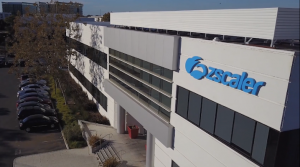The mainframe dinosaur roars at 50 | #CIOangle
![]() IBM’s System z mainframe is celebrating 20 years of double-digit growth in annual installed capacity, driven by the Internet and mobile computing. System z mainframes process 30 billion business transactions daily and up to 150,000 transactions a second in peak loads. Not bad for a system that traces its ancestry back 50 years to the April 7, 1964 introduction of the IBM 360 and was deemed a “dinosaur” 30 years ago.
IBM’s System z mainframe is celebrating 20 years of double-digit growth in annual installed capacity, driven by the Internet and mobile computing. System z mainframes process 30 billion business transactions daily and up to 150,000 transactions a second in peak loads. Not bad for a system that traces its ancestry back 50 years to the April 7, 1964 introduction of the IBM 360 and was deemed a “dinosaur” 30 years ago.
“System z is the go-to platform for large scale transactions, for ERP, banks, retail, etc.,” said Tom Rosamilia, Senior Vice President of IBM Systems & Technology Group and IBM Integrated Supply Chain, in an exclusive interview with SiliconANGLE at Mainframe50, the IBM mainframe’s birthday party. “And mobile is generating huge amounts of transactions. The mainframe runs the world’s financial systems, and in banking alone you can see 600 percent transaction growth from mobile, 200 percent over the Internet, and 60 percent in branch ATM transactions.”
Before the cloud, Rosamilia said, when he received a check it went into a drawer in his desk. When he accumulated six, he took them to the bank. Now when he gets a check he sends a photo of it to the bank from his smartphone for electronic deposit. It is faster, more convenient and turned one batch transaction into six real-time transactions.
In South Africa, said Pat Toole, General Manager, IBM System z, IBM customer FMB is using mobile linked to System z to reach customers who never used a bank before. Across Africa young men are moving from rural villages to work in the cities and send money home. To do that they would hire a cab driver as a courier. Now they can deposit their salary electronically at FMB and their families can access the money through their cell phones within minutes, without paying the 15 percent cab fee. “That’s 180 million mobile transactions a month in Africa” just at that bank, he said.
![]() And this is just in banking. Internet and mobile are driving huge volumes of transactions of all kinds, and, said Rosamilia, “We’re seeing hyper growth in mobile. People on average check their mobile devices 150 times a day. They’re not always connected to a mainframe, but frequently they are.”
And this is just in banking. Internet and mobile are driving huge volumes of transactions of all kinds, and, said Rosamilia, “We’re seeing hyper growth in mobile. People on average check their mobile devices 150 times a day. They’re not always connected to a mainframe, but frequently they are.”
Hadoop on System z
x
At Mainframe50, IBM announced that Hadoop is now running on Linux on System z, turning the mainframe into the largest Big Data analysis platform in the enterprise.
“Frankly, customers were asking for this,” Toole said. “Many clients have found themselves making so many copies of the data that they dramatically increased the expense of trying to manage and maintain 10-20 different copies. All the while the data’s still sitting on the mainframe.”
A complete data analytics strategy, he said, includes real-time, inline analytics of active data with high security. The best location for that is on the system where the transactional data resides, often a mainframe. Then companies do historical analysis on that data. Finally, they want predictive analysis, which often involves combining the transactional and unstructured data. When the preponderance of data is already on the mainframe, it makes sense to do that analysis there.
“Supporting Hadoop on the mainframe is really just another step in our journey to provide clients the capability to do complete lifecycle data management,” Toole said. It also adds a new driver to System z’s continued growth.
System z in the cloud
x
![]() High efficiency is another big advantage of System z, Toole said. While many servers run at below 50 percent utilization, mainframes have always operated at close to 100 percent, 24x7x365 for years.
High efficiency is another big advantage of System z, Toole said. While many servers run at below 50 percent utilization, mainframes have always operated at close to 100 percent, 24x7x365 for years.
“These systems are designed to survive,” he said, to the point that sometimes they will do “crazy things” to keep operating.
The original mainframes were so expensive that they were operated on a cost-per-minute basis that pressured operations to run them at maximum load. A minute unused was money wasted. IBM created VM, the first virtualization engine, for the mainframe in the 1980s to drive maximum utilization. Today VM is the base of the System z software stack and virtualizes compute, storage and network, with zOS and Linux running in virtual machines above it.
With the major sources of transactional traffic shifting to the public cloud and the importance of other cloud-based data sources, System z is moving into cloud data centers. IBM’s SoftLayer mega-datacenters run System z, Rosamilia says, and IBM’s partners are adopting it as part of their cloud infrastructure. OpenStack runs on the mainframe, and IBM is promoting z as the ideal infrastructure to support corporate private clouds because of its dependability, security, and transactional capacity. So at 50 the data center “dinosaur” is robust with a bright future.
Images courtesy IBM Corp.
A message from John Furrier, co-founder of SiliconANGLE:
Your vote of support is important to us and it helps us keep the content FREE.
One click below supports our mission to provide free, deep, and relevant content.
Join our community on YouTube
Join the community that includes more than 15,000 #CubeAlumni experts, including Amazon.com CEO Andy Jassy, Dell Technologies founder and CEO Michael Dell, Intel CEO Pat Gelsinger, and many more luminaries and experts.
THANK YOU









